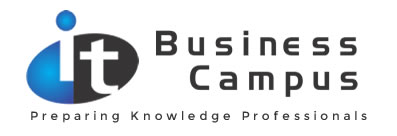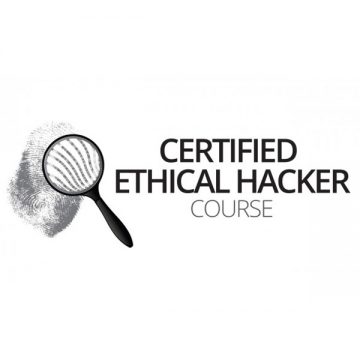Description
IT Security is without question one of the hottest and most lucrative areas of Information Technology today and the CISM is one of the most valued credentials in the marketplace. This course promotes international practices and provides management with assurance that those earning this designation have the necessary knowledge and experience to provide effective security management. This course trains students for a position in Risk Management, Security Auditor, Compliance Officer or an executive management position as a CSO, CTO or CIO.
Module 1: Information Security Governance
1.1 C I S M Introduction
1.2 Information Security
1.3 Business Goals Objectives And Functions
1.4 Business Goals And Information Security
1.5 Information Security Threats
1.6 Information Security Management
1.7 Identity Management
1.8 Data Protection
1.9 Network Security
1.10 Personnel Security
1.11 Facilty Security
1.12 Security Complianceand Standards
1.13 Information Security Strategy
1.14 Inputs And Outputs Of The Informtion Security Strategy
1.15 Processes In An Information Security Strategy
1.16 People In An Information Security Strategy
1.17 Technologies In An Information Security Strategy
1.18 Logical And Physical Information Security Strategy Architectures
1.19 Information Security And Business Functions
1.20 Information Security Policies And Enterprise Objectives
1.21 International Standards For The Security Management
1.22 I S O- I E C27000 Standards
1.23 International Info Government Standards
1.24 Information Security Government Standards In The United States
1.25 Methods Of Coordinating Information Security Activities
1.26 How To Develop An Information Security Strategy
1.27 Information Security Governance
1.28 Role Of The Security In Governance
1.29 Scope Of Information Security Governance
1.30 Charter Of Information Security Governance
1.31 Information Security Governance And Enterprise Governance
1.32 How To Align Information Security Strategy With Corporate Governance
1.33 Regulatory Requirements And Information Security
1.34 Business Impact Of Regulatory Requirements
1.35 Liability Management
1.36 Liability Management Strategies
1.37 How To Identify Legal And Regulatory Requirements
1.38 Business Case Development
1.39 Budgetary Reporting Methods
1.40 Budgetary Planning Strategy
1.41 How To Justify Investment In InfOSecurity
1.42 Organizational Drivers
1.43 Impact Of Drivers On InfOSecurity
1.44 Third Party Relationships
1.45 How To Identify Drivers Affecting The Organization
1.46 Purpose Of Obtaining Commitment To InfOSecurity
1.47 Methods For Obtaining Commitment
1.48 I S S G
1.49 I S S G Roles And Responsibilities
1.50 I S S G Operation
1.51 How To Obtain Senior Managements Commitment To InfOSecurity
1.52 InfOSecurity Management Roles And Responsibilities
1.53 How To Define Roles And Responsibilities For InfOSecurity
1.54 The Need For Reporting And Communicating
1.55 Methods For Reporting In An Organization
1.56 Methods Of Communication In An Organization
1.57 How To Establish Reporting And Communicating Channels
Module 2: Risk Management
2.1 Risk
2.2 Risk Assessment
2.3 Info Threat Types
2.4 Info Vulnerabilities
2.5 Common Points Of Exposure
2.6 InfOSecurity Controls
2.7 Types Of InfOSecurity Controls
2.8 Common InfOSecurity Countermeasures
2.9 Overview Of The Risk Assessment Process
2.10 Factors Used In Risk Assessment And Analysis
2.11 Risk Assessment Methodologies
2.12 Quantitative Risk Assessment- Part1
2.13 Quantitative Risk Assessment- Part2
2.14 Qualitative Risk Assessment
2.15 Hybrid Risk Assessment
2.16 Best Practices For InfOSecurity Management
2.17 Gap Analysis
2.18 How To Implement An Info Risk Assessment Process
2.19 Info Classification Schemas
2.20 Components Of Info Classification Schemas
2.21 Info Ownership Schemas
2.22 Components Of Info Ownership Schemas
2.23 Info Resource Valuation
2.24 Valuation Methodologies
2.25 How To Determine Info Asset Classification And Ownership
2.26 Baseline Modeling
2.27 Control Requirements
2.28 Baseline Modeling And Risk Based Assessment Of Control Requirements
2.29 How To Conduct Ongoing Threat And Vulnerability Evaluations
2.30 B I As
2.31 B I A Methods
2.32 Factors For Determining Info Resource Sensitivity And Critically
2.33 Impact Of Adverse Events
2.34 How To Conduct Periodic B I As
2.35 Methods For Measuring Effectiveness Of Controls And Countermeasures
2.36 Risk Mitigation
2.37 Risk Mitigation Strategies
2.38 Effect Of Implementing Risk Mitigation Strategies
2.39 Acceptable Levels Of Risk
2.40 Cost Benefit Analysis
2.41 How To Identify And Evaluate Risk Mitigation Strategies
2.42 Life Cycle Processes
2.43 Life Cycle- Based Risk Management
2.44 Risk Management Life Cycle
2.45 Business Life Cycle Processes Affected By Risk Management
2.46 Life Cycled- Based Risk Management Principles And Practices
2.47 How To Integrate Risk Management Into Business Life Cycle Processes
2.48 Significant Changes
2.49 Risk Management Process
2.50 Risk Reporting Methods
2.51 Components Of Risk Reports
2.52 How To Report Changes In Info Risk
Module 3: Information Security Program Development
3.1 InfOSecurity Strategies
3.2 Common InfOSecurity Strategies
3.3 InfOSecurity Implementation Plans
3.4 Conversation Of Strategies Into Implementation Plans
3.5 InfOSecurity Programs
3.6 InfOSecurity Program Maintenance
3.7 Methods For Maintaining An InfOSecurity Program
3.8 Succession Planning
3.9 Allocation Of Jobs
3.10 Program Documentation
3.11 How To Develop Plans To Implement An InfOSecurity Strategy
3.12 Security Technologies And Controls
3.13 Cryptographic Techniques
3.14 Symmetric Cryptography
3.15 Public Key Cryptography
3.16 Hashes
3.17 Access Control
3.18 Access Control Categories
3.19 Physical Access Controls
3.20 Technical Access Controls
3.21 Administrative Access Controls
3.22 Monitoring Tools
3.23 I D Ss
3.24 Anti- Virus Systems
3.25 Policy- Compliance Systems
3.26 Common Activities Required In InfOSecurity Programs
3.27 Prerequisites For Implementing The Program
3.28 Implementation Plan Management
3.29 Types Of Security Controls
3.30 InfOSecurity Controls Development
3.31 How TOSpecify InfOSecurity Program Activities
3.32 Business Assurance Function
3.33 Common Business Assurance Functions
3.34 Methods For Aligning InfOSecurity Program With Business Assurance Functions
3.35 How To Coordinate InfOSecurity Programs With Business Assurance Functions
3.36 S L As
3.37 Internal Resources
3.38 External Resources
3.39 Services Provided By External Resources- Part1
3.40 Services Provided By External Resources- Part2
3.41 Skills Commonly Required For InfOSecurity Program Implementation
3.42 Identification Of Resources And Skills Required For A Particular Implementation
3.43 Resource Acquisition Methods
3.44 Skills Acquisition Methods
3.45 How To Identify Resources Needed For InfOSecurity Program Implementation
3.46 InfOSecurity Architectures
3.47 The S A B S A Model For Security Architecture
3.48 Deployment Considerations
3.49 Deployment Of InfOSecurity Architectures
3.50 How To Develop InfOSecurity Architectures
3.51 InfOSecurity Policies
3.52 Components Of InfOSecurity Policies
3.53 InfOSecurity Policies And The InfOSecurity Strategy
3.54 InfOSecurity Policies And Enterprise Business Objectives
3.55 InfOSecurity Policy Development Factors
3.56 Methods For Communicating InfOSecurity Policies
3.57 InfOSecurity Policy Maintenance
3.58 How To Develop InfOSecurity Policies
3.59 InfOSecurity Awareness Program Training Programs And Education Programs
3.60 Security Awareness Training And Education Gap Analysis
3.61 Methods For Closing The Security Awareness Training And Education Gaps
3.62 Security- Based Cultures And Behaviors
3.63 Methods For Establishing And Maintaining A Security- Based Culture In The Enterprise
3.64 How To Develop InfOSecurity Awareness Training And Education Programs
3.65 Supporting Documentation For InfOSecurity Policies
3.66 Standards Procedures Guidelines And Baselines
3.67 Codes Of Conduct
3.68 N D As
3.69 Methods For Developing Supporting Documentation
3.70 Methods For Implementing Supporting Documentation And For Communicating Supporting Documentation
3.71 Methods For Maintaining Supporting Documentation
3.72 C And A
3.73 C And A Programs
3.74 How To Develop Supporting Documentation For InfOSecurity Policies
Module 4: Information Security Program Implementation
4.1 Enterprise Business Objectives
4.2 Integrating Enterprise Business Objectives And InfOSecurity Policies
4.3 Organizational Processes
4.4 Change Control
4.5 Merges And Acquisitions
4.6 Organizational Processes And InfOSecurity Policies
4.7 Methods For Integrating InfOSecurity Policies And Organizational Processes
4.8 Life Cycle Methodologies
4.9 Types Of Life Cycle Methodologies
4.10 How To Integrate InfOSecurity Requirements Into Organizational Processes
4.11 Types Of Contracts Affected By InfOSecurity Programs
4.12 Joint Ventures
4.13 Outsourced Provides And InfOSecurity
4.14 Business Partners And InfOSecurity
4.15 Customers And InfOSecurity
4.16 Third Party And InfOSecurity
4.17 Risk Management
4.18 Risk Management Methods And Techniques For Third Parties
4.19 S L As And InfOSecurity
4.20 Contracts And InfOSecurity
4.21 Due Diligence And InfOSecurity
4.22 Suppliers And InfOSecurity
4.23 Subcontractors And InfOSecurity
4.24 How To Integrate InfOSecurity Controls Into Contracts
4.25 InfOSecurity Metrics
4.26 Types Of Metrics Commonly Used For InfOSecurity
4.27 Metric Design Development And Implementation
4.28 Goals Of Evaluating InfOSecurity Controls
4.29 Methods Of Evaluating InfOSecurity Controls
4.30 Vulnerability Testing
4.31 Types Of Vulnerability Testing
4.32 Effects Of Vulnerability Assessment And Testing
4.33 Vulnerability Correction
4.34 Commercial Assessment Tools
4.35 Goals Of Tracking InfOSecurity Awareness Training And Education Programs
4.36 Methods For Tracking InfOSecurity Awareness Training And Education Programs
4.37 Evaluation Of Training Effectiveness Relevance
4.38 How To Create InfOSecurity Program Evaluation Metrics
Module 5: Information Security Program Management
5.1 Management Metrics
5.2 Types Of Management Metrics
5.3 Data Collection
5.4 Periodic Reviews
5.5 Monitoring Approaches
5.6 K P Is
5.7 Types Of Measurements
5.8 Other Measurements
5.9 InfOSecurity Reviews
5.10 The Role Of Assurance Providers
5.11 Comparing Internal And External Assurance Providers
5.12 Line Management Technique
5.13 Budgeting
5.14 Staff Management
5.15 Facilities
5.16 How To Manage InfOSecurity Program Resources
5.17 Security Policies
5.18 Security Policy Components
5.19 Implementation Of InfOSecurity Policies
5.20 Administrative Processes And Procedures
5.21 Access Control Types
5.22 A C M
5.23 Access Security Policy Principles
5.24 Identity Management And Compliance
5.25 Authentication Factors
5.26 Remote Access
5.27 User Registration
5.28 Procurement
5.29 How To Enforce Policy And Standards Compliance
5.30 Types Of Third Party Relationships
5.31 Methods For Managing InfOSecurity Regarding Third Parties
5.32 Security Service Providers
5.33 Third Party Contract Provisions
5.34 Methods To Define Security Requirements In S L As Security Provisions
5.35 How To Enforce Contractual InfOSecurity Controls
5.36 S D L C
5.37 Code Development
5.38 Common Techniques For Security Enforcement
5.39 How To Enforce InfOSecurity During Systems Development
5.40 Maintenance
5.41 Methods Of Monitoring Security Activities
5.42 Impact Of Change And Configuration Management Activities
5.43 How To Maintain InfOSecurity Within An Organization
5.44 Due Diligence Activities
5.45 Types Of Due Diligence Activities
5.46 Reviews Of Info Access
5.47 Standards Of Managing And Controlling Info Access
5.48 How To Provide InfOSecurity Advice And Guidance
5.49 InfOSecurity Awareness
5.50 Types Of InfOSecurity Stakeholders
5.51 Methods Of Stakeholder Education
5.52 Security Stakeholder Education Process
5.53 How To Provide InfOSecurity Awareness And Training
5.54 Methods Of Testing The Effectiveness Of InfOSecurity Control
5.55 The Penetration Testing Process
5.56 Types Of Penetration Testing
5.57 Password Cracking
5.58 Social Engineering Attacks
5.59 Social Engineering Types
5.60 External Vulnerability Reporting Sources
5.61 Regulatory Reporting Requirements
5.62 Internal Reporting Requirements
5.63 How To Analyze The Effectiveness Of InfOSecurity Controls
5.64 Noncompliance Issues
5.65 Security Baselines
5.66 Events Affecting The Security Baseline
5.67 InfOSecurity Problem Management Process
5.68 How To Resolve Noncompliance Issues
Module 6: Incident Management and Response
6.1 Incident Response Capability
6.2 Components Of Incident Response
6.3 B C P
6.4 B I A Phase
6.5 Coop
6.6 D R P
6.7 Alternate Sites
6.8 Develop A B C P
6.9 Develop A D R P
6.10 M T D
6.11 R P O
6.12 R T O
6.13 Data Backup Strategies
6.14 Data Backup Types
6.15 Data Restoration Strategies
6.16 Info Incident Management Practices
6.17 I R P
6.18 Trigger Events And Types Of Trigger Events
6.19 Methods Of Containing Damage
6.20 How To Develop An I R P
6.21 Escalation Process
6.22 Notification Process
6.23 I R T
6.24 Crisis Communication
6.25 How To Establish An Escalation Process
6.26 Internal Reporting Requirements
6.27 External Reporting Requirements
6.28 Communication Process
6.29 How To Develop A Communication Process
6.30 I R P And D R P
6.31 I R P And B C P
6.32 Methods Of Identifying Business Resources Essential To Recovery
6.33 How To Integrate An I R P
6.34 Role Of Primary I R T Members And Role Of Additional I R T Members
6.35 Response Team Tools And Equipment
6.36 How To Develop I R Ts
6.37 B C P Testing
6.38 Disaster Recovery Testing
6.39 Schedule Disaster Recovery Testing
6.40 Refine I R P
6.41 How To Test An I R P
6.42 Damage Assessment
6.43 Business Impacts Caused By Security Incidents
6.44 How To Manage Responses To InfOSecurity Incidents
6.45 Computer And Digital Forensics
6.46 Forensic Requirements For Responding To InfOSecurity Incidents
6.47 Evidence Life Cycle
6.48 Evidence Collection
6.49 Evidence Types
6.50 Five Common Rules Of Evidence
6.51 Chain Of Custody
6.52 How To Investigate An InfOSecurity Incident
6.53 P I R Methods
6.54 Security Incident Review Process
6.55 Investigate Cause Of A Security Incident
6.56 Identify Corrective Actions
6.57 Reassess Security Risks After A Security Incident
6.58 How To Conduct A Post- Incident Review
6.59 Pre Test- Test Strategy
6.60 Post Test
With IT UpSkill e-learning system, certification has never been simpler! You can be starting your IT career or taking your current IT skills to the next level in just a few short weeks. Our award winning learning system gives you all of the benefits of a live class at just a fraction of the cost. We’re so confident that our materials will produce results, If you fail your Internal Campus Exam the 1st Time we will Offer you to RE-WRITE for free.
IT UpSkill courses include:

IT UpSkill uses only the industry’s finest instructors in the IT industry. They have a minimum of 15 years real-world experience and are subject matter experts in their fields. Unlike a live class, you can fast-forward, repeat or rewind all your lectures. This creates a personal learning experience and gives you all the benefit of hands-on training with the flexibility of doing it around your schedule 24/7.

Our courseware includes instructor-led demonstrations and visual presentations that allow students to develop their skills based on real world scenarios explained by the instructor. IT UpSkill always focuses on real world scenarios and skill-set development.

IT UpSkill custom practice exams prepare you for your exams differently and more effectively than the traditional exam preps on the market. You will have practice quizzes after each module to ensure you are confident on the topic you have completed before proceeding.
This will allow you to gauge your effectiveness before moving to the next module in your course. IT UpSkill Courses also include practice exams designed to replicate and mirror the environment in the testing center. These exams are on average 100 questions to ensure you are 100% prepared before taking your certification exam.

IT UpSkill has designed a world class Learning Management System (LMS) This system allows you to interact and collaborate with other students and IT UpSkill employees, form study groups, engage in discussions in our NOW@ Forums, rate and like different courses and stay up to date with all the latest industry knowledge through our forums, student contributions and announcement features. This LMS is unmatched in the industry and makes learning fun and enjoyable.

IT UpSkill knows that education is not a one size fits all approach. Students learn in different ways through different tools. That is why we provide Flash Cards and Education Games throughout our courses. This will allow you to train in ways that keep you engaged and focused. Each course will have dozens of Flash Cards so you can sharpen your skill-sets throughout your training as well as educational games designed to make sure your retention level of the materials is extremely high.

ITUpSkill self-paced training programs are designed in a modular fashion to allow you the flexibility to work with expert level instruction anytime 24/7. All courses are arranged in defined sections with navigation controls allowing you to control the pace of your training. This allows students to learn at their own pace around their schedule.







Reviews
There are no reviews yet.